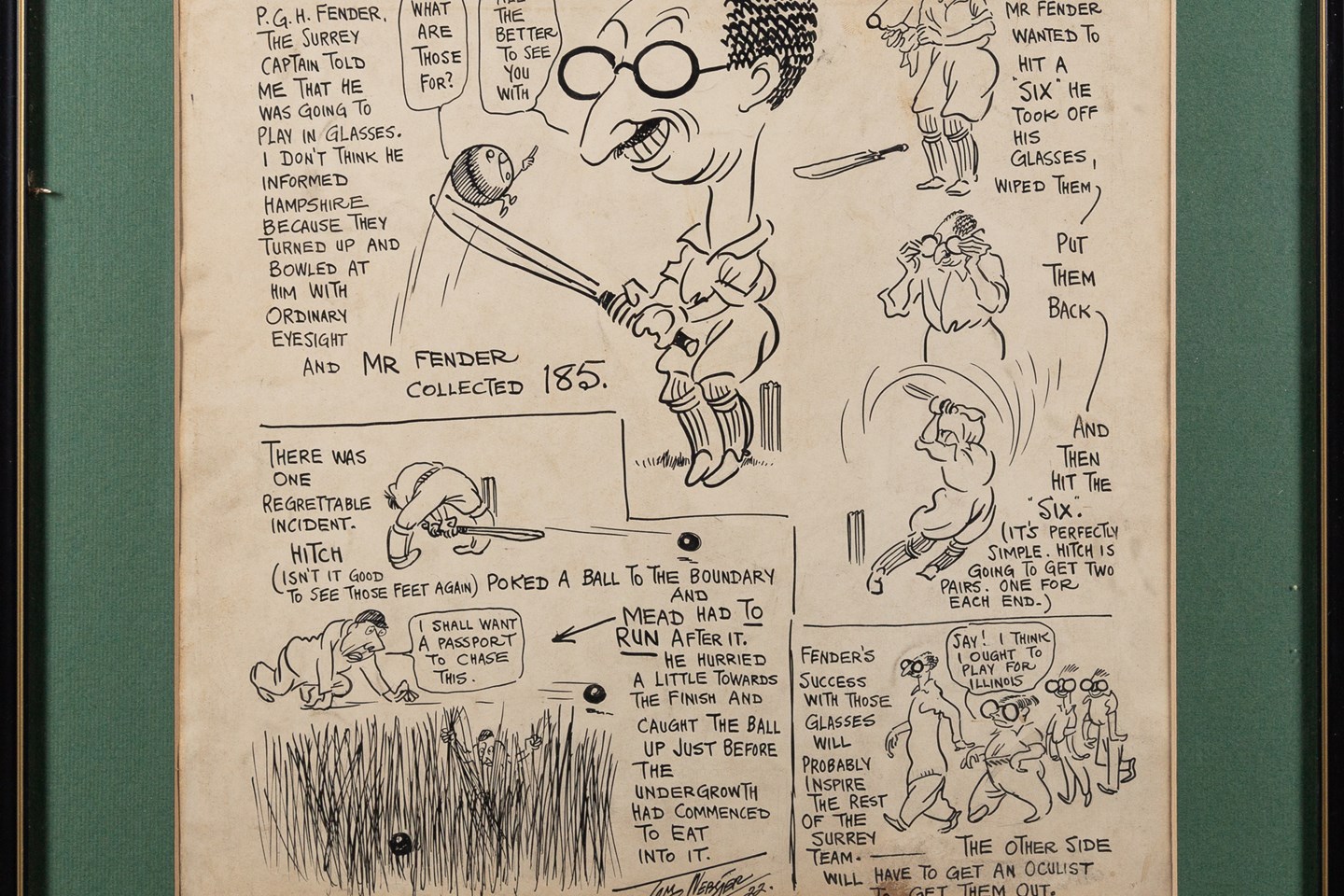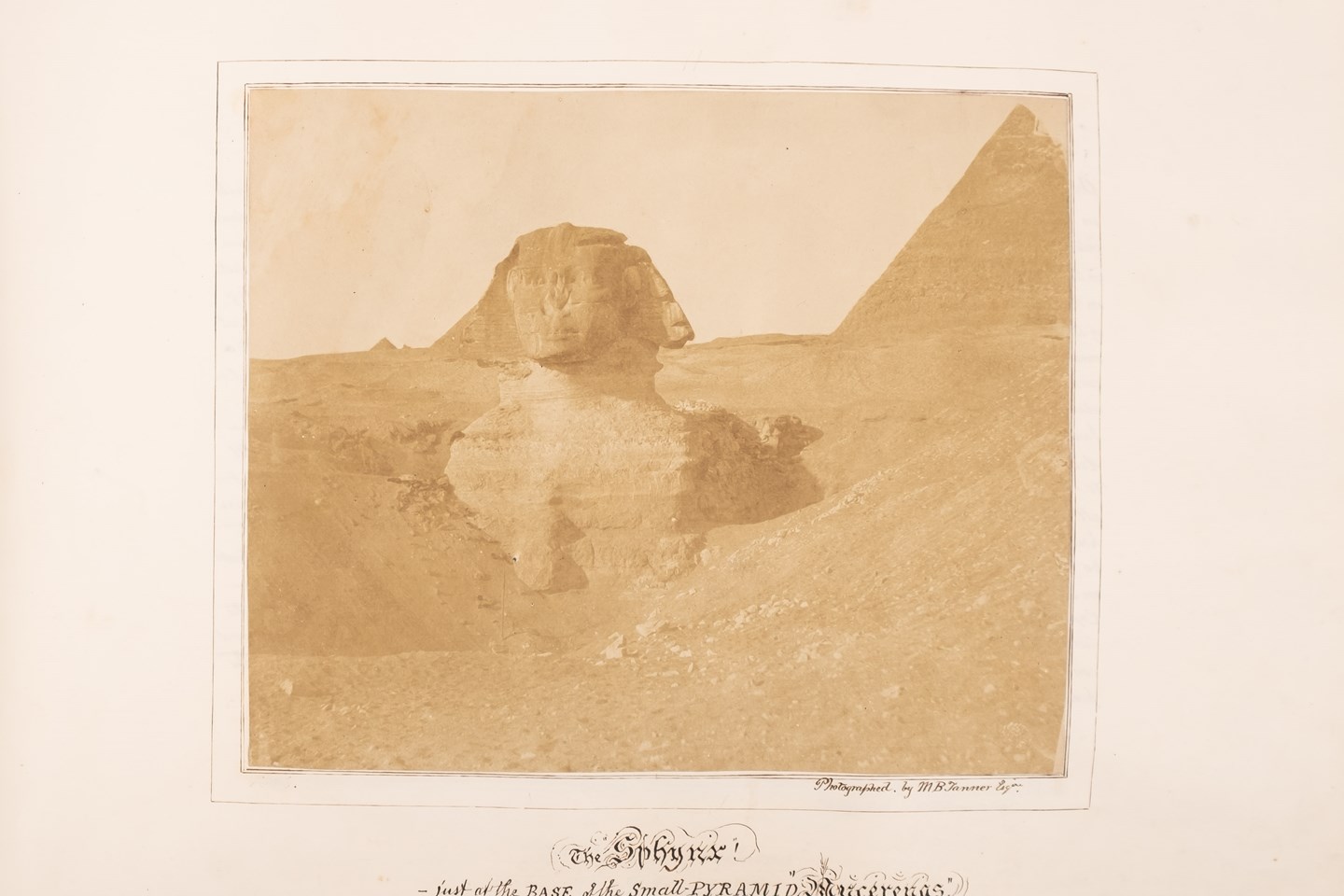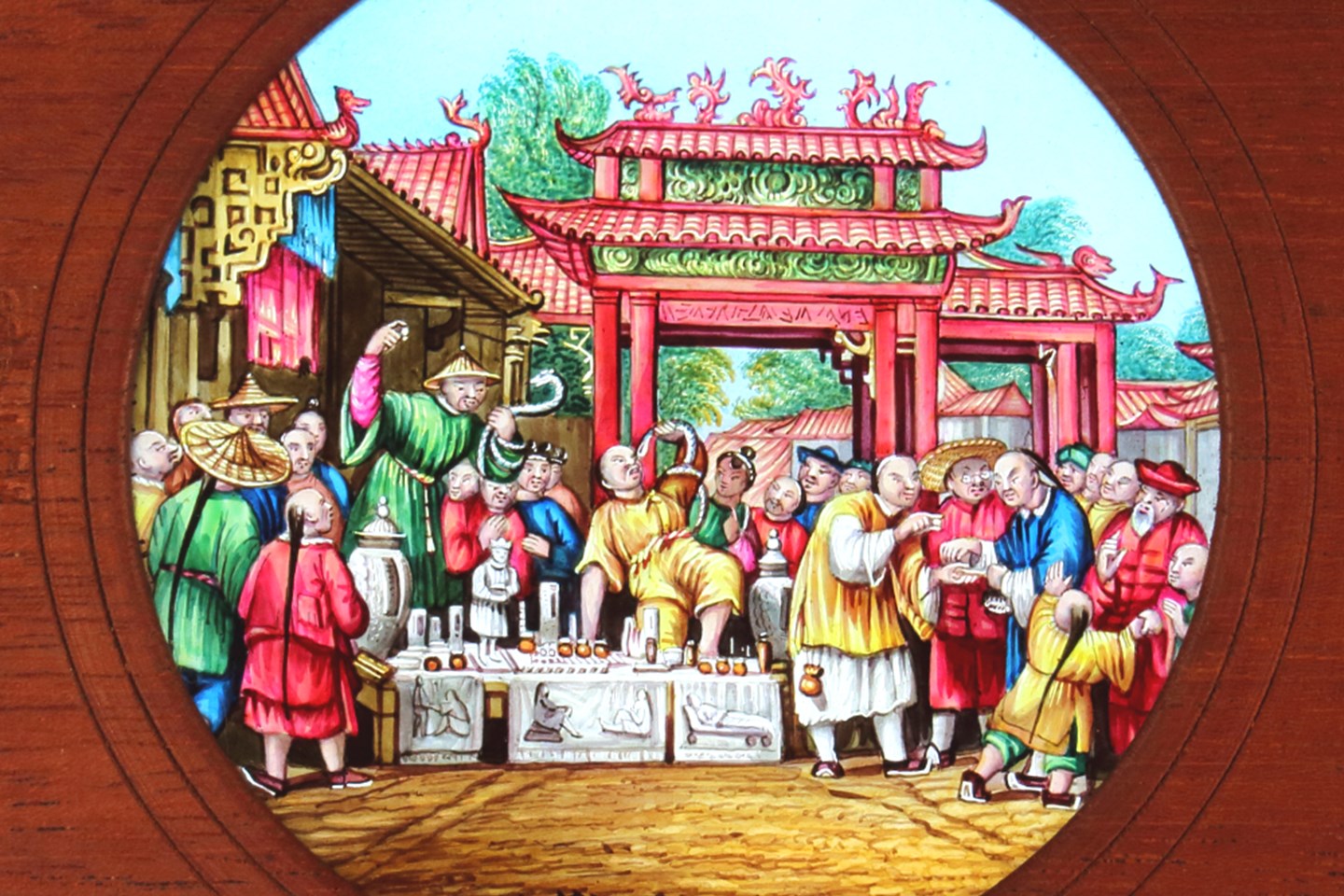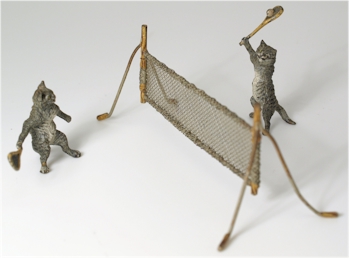
Austrian Cold Painted Bronze Cats Playing Tennis.
Austrian cold painted bronzes have been produced from the late 19th century up until the present day, although the examples illustrated in this article are late 19th and early 20th century examples. Possibly the greatest exponent of the art of miniature bronzes was Franz Bergman (1838-1894). His bronze subjects were wide ranging from birds and animals, carpet sellers to American Indians, erotic semi-naked females to reptiles.
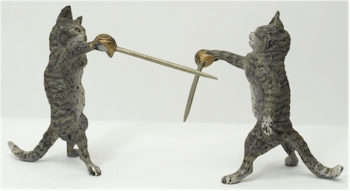
Austrian Cold Painted Bronze Cats Fencing.
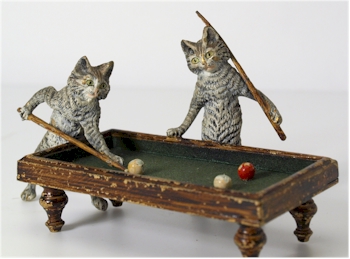
Austrian Cold Painted Bronze Cats Playing Billiards.
Bergman was very quick to seize on popular subjects of the day and model them in bronze. During the Egyptian revival period scantily clad bronze nude females would rise up from spring-loaded Egyptian sarcophagus. Arab street sellers were modelled seated on carpets with their wares spread out before them. After the American plains wars with the native Indians and the travelling shows such as Buffalo Bill's touring Europe, interest in the Sioux, Apache and other Indians became all the rage. It was not long before cold painted bronze models of Indian braves became available, with their highly coloured head-dresses, as they were perfect subjects for Bergman.
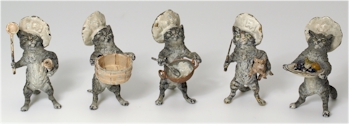
Austrian Cold Painted Bronze Cats dressed as Chefs.
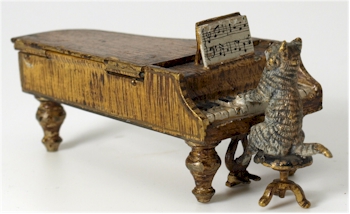
Austrian Cold Painted Bronze Cat Playing the Piano.
The cats illustrated come from possibly the best collection of Austrian cold painted bronze cats I have seen in a long time. The subject matters are as diverse as sport, schooling, Salvation Army, classical music and romanticism. So why were these cats so popular during the latter part of the 19th century and the first quarter of the 20th century?
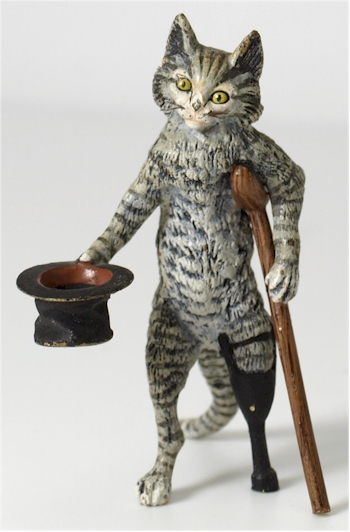
Austrian Cold Painted Bronze Cat with a Peg Leg.
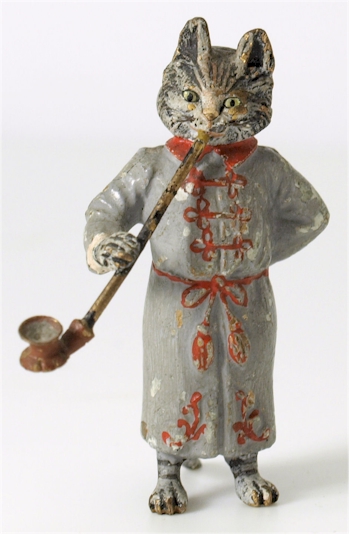
Austrian Cold Painted Bronze Cat Smoking a Pipe.
Firstly, the reason they were popular was that cats made good pets and great companions, but still retain that air of independence about them. Their antics make you laugh and their longing for attention especially around feeding time keeps you amused. Secondly, in 1859 Charles Darwin published his theory 'On the Origin of Species' regarding "natural selection". This came as a bombshell to a fairly puritanical Victorian society, the idea that man could have descended from an ape rather than be created in God's likeness.
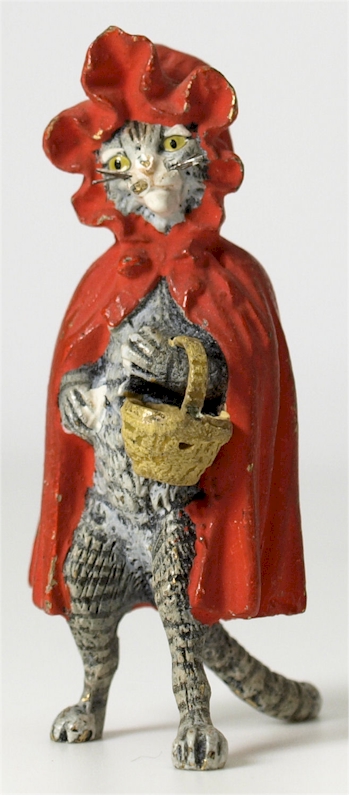
Austrian Cold Painted Bronze Cat dressed in a Red Cloak.
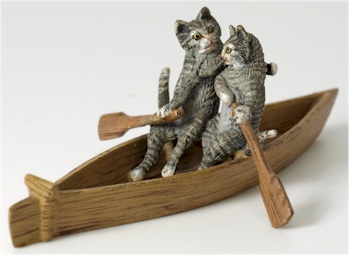
Austrian Cold Painted Bronze Cats Rowing a Boat.
The cartoonists of the time had a field day often depicting Darwin with the body of an ape. A satirical bronze was produced modelled as an ape seated on Darwin's book studying a human skull. The anthropomorphism of animals had begun. In 1865, Lewis Carroll's 'Alice in Wonderland' was published, illustrated by John Tenniel with animals such as the White Rabbit walking on hind legs, dressed in clothes and drinking tea!
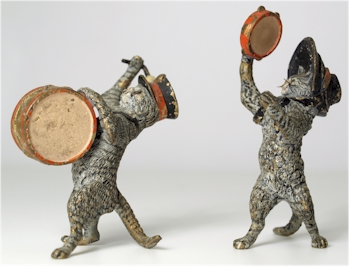
Austrian Cold Painted Bronze Cats as the Salvation Army.
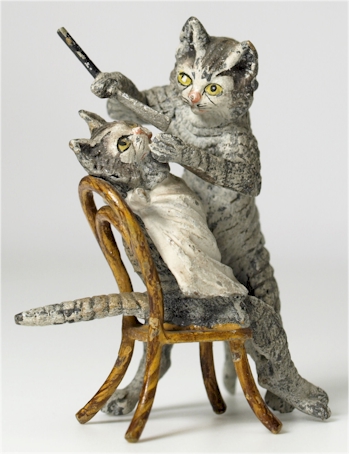
Austrian Cold Painted Bronze Cat being Shaved.
The final twist in the tale comes a few years later in 1886 when a relatively unknown artist produced his first drawing for The London Illustrated News of an anthropomorphised cat, the artist's name was Louis Wain. He illustrated numerous books in which cats would parody humans and he is probably best known for his postcards which are highly sort after by collectors.
I would like to think that perhaps Franz Bergman was acquainted with Wain's postcards and provided the catalyst for this extraordinary collection of bronze cats. Certainly some of the poses of the cats reflect Louis Wain's style with a slightly tongue in cheek view of human behaviour.
- Bearnes Hampton & Littlewood
- Works of Art
- Franz Bergman (1838-1894)
- Louis Wain
Austrian Cold Painted Bronze Cats was written on Friday, 28th July 2017.













